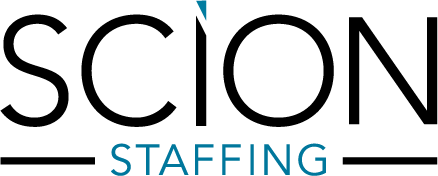
07 Apr Four Team Building Activities to Create a More Effective Team
As more companies begin to roll out their plans to return to the office, one of the biggest concerns that managers may face is the lack of in-person camaraderie between their team members. In order to reach certain team goals, communication and teamwork is crucial. When an entire team has been away from each other for almost two years in some cases, building back strong teams can prove to be difficult. In this article, we’ll discuss some ways you can build back your high-performing team, as well as some team building activities that will help you reach that common goal of success in the workplace.
Why is team building so important?
A team is only strong when all of the team members can work together in unity to accomplish their goals. Team building is extremely important to overall team performance, as well as individual performance and speaks to the impact of the team leader. Successful teamwork can be broken down into several traits:
- The team works toward a shared goal or objective
- An effective team is organized
- An effective team values each other’s time
- A good team doesn’t shy away from problems
- Teams that are diverse help with becoming more effective
- Open communication allows all employees to have a voice
Now that we understand why team building activities are so important to success and what traits make up the best teams, let’s take a look at some fun activities you can do in the workplace to help bring on more effective teamwork.
Exercise #1: “Won in 60 Seconds”
Won in 60 Seconds is actually a series of team building exercises. Teams compete to complete various cooperative challenges in a minute or less.
Example challenges:
- Using chopsticks, transfer as many beads as possible from one bowl to another
- Keep a balloon in the air for one minute. No team member can tap the balloon more than twice in a row
- Line up and take turns trying to bounce a ping pong ball into a cup
- Stack and unstack a pyramid of thirty-six plastic cups
- Using only a straw for suction, carry a ping pong ball to the finish line in a relay race
One member of the team will keep score throughout the challenges, and at the end of all rounds each group will compare stats. Won in 60 Seconds harnesses competition to create team spirit and requires teams to communicate and innovate to achieve goals.
Exercise #2: “Real Life Social Media Wall”
Like most people born before the new millennium, I remember a world before social media. Back in the day, we passed notes to friends and mailed horribly awkward school photos to relatives. While the immediacy of social media is convenient, printing a picture or hand-writing a note is satisfyingly sentimental.
Your coworkers may or may not be friends on social media. Either way, you can recreate the experience just for your office by starting a Real-Life social media Wall.
To create the wall:
- Hang a bulletin board
- Provide paper, markers, sticky notes, and thumbtacks
- Encourage employees to contribute content and comment on colleague’s contributions
You can find thumbtacks shaped like smiley faces and hearts to simulate “like” and “love” reactions. Mini post-it notes work great for “comments,” or you can paint the whole board with blackboard paint and allow teammates to scrawl in chalk.
Exercise #3: “Common Factor”
Finding common ground helps teammates solidify relationships. Common Factor is a team building exercise that helps colleagues unearth these connections in record time. This game is one of the best quick team building exercises.
To lead participants through a game of Common Factor, ask teammates to move to a designated area of the room if certain statements apply. For instance, “If you have ever attended a music festival, gather in the center of the room.”
Sample common factors:
- Pet owners
- Exotic pet owners
- Parents
- Musicians
- Country music fans
- Hip hop fans
- Horror movie fans
- Romantic comedy fans
- Left-handed
- Have been abroad
- Have visited more than ten countries
- Have visited 20+ states
- Hate cilantro
Feel free to add your own factors to the list, even if the ideas are unusual. Even if employees wind up standing in front of the room alone for one category, coworkers learn a new and interesting fact about that teammate.
Chances are that your colleagues will find more commonalities than differences. Either way, this maneuver provides colleagues with talking points. To optimize the exercise, you can leave time at the end for participants to link up and chat about the facts.
Exercise #4: “Scavenger Hunt”
Scavenger hunts are one of the most common team building exercises for employees. A scavenger hunt is a game where participants search for particular items. The player or team who finds the most objects scores the most points and wins the game. Scavenger hunts have long been a staple of corporate team bonding, but you can spice up the quest with the variations listed below.
Scavenger hunt variations:
- Company Hunt-Lead participants through different areas of the company to find objects specific to different departments. For example, a photo of the legal department’s dartboard, or a fresh baked chocolate chip cookie from human resources. This approach familiarizes coworkers with colleagues and tightens company culture.
- Friend Hunt-Challenge players to procure items from and complete tasks with strangers. For instance, record a duet with a stranger or acquire a business card for an unusual profession. This approach practices interpersonal and persuasion skills.
- Art Hunt-In this version of the hunt, participants collect images, objects, or words and create a mural or poem with the found materials. This approach emphasizes creativity and ingenuity.
- Reverse Hunt-In this twist on the traditional hunt, teammates receive bizarre objects and pictures of strange items, and must identify as many objects as possible in order to compile a list. For example, items may include unusual animals, industrial tools, or lesser-known foreign landmarks. This approach favors critical thinking and discussion.
All scavenger hunts promote resourcefulness and collaboration. Teammates must join forces, put heads together, and brainstorm ways to collect as many clues as possible. Corporate team activities such as scavenger hunts give colleagues a shared purpose which can translate into workplace alliances.
Are you looking to add your team? Scion Staffing offers award-winning staffing services!
If you’re looking to add more members to your team, Scion Staffing offers award-winning staffing services for organizations in the continental United States. Our staffing divisions serve six distinct areas: Corporate, Nonprofit, Information Technology (IT), Creative, Medical/Healthcare, and Executive Search. Within each division our experienced recruiters specialize in providing placements across a wide variety of departments including administrative, finance, operations, executive, information technology, creative, marketing, public relations, human resources, sales, engineering, medical, nonprofit specialties, and service positions. Contact us today to get a search started or visit our website for more information!



